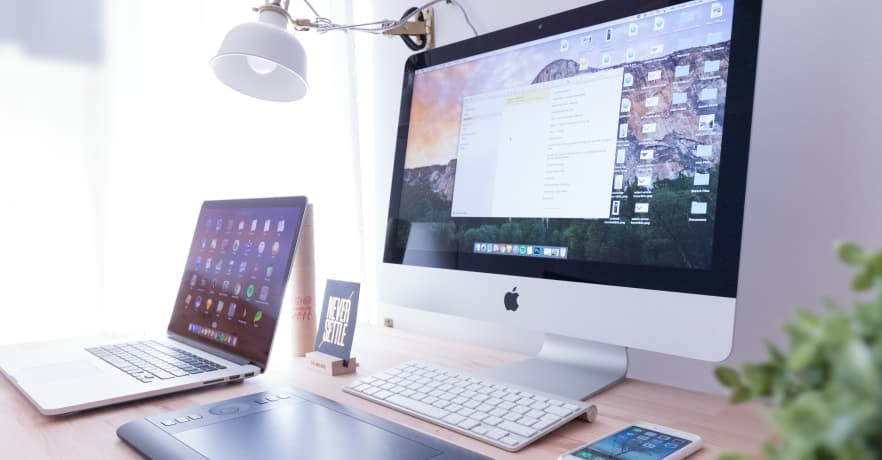ESG / CSR
Industries
What is the Carbon Footprint of a Refurbished Phone?



The refurbished market is booming, especially as customers begin to grow more aware of the importance of sustainability and protecting the planet.
In today’s world, smartphones are no longer just a vessel for communication – but serve as a tool for our everyday lives, such as by providing users with a GPS, camera, Internet browser, music streaming, and more.
However, despite the multi-usage demeanor of the modern cell phone – it doesn’t have the longest life-span.
Several are tired of spending a fortune on a new phone, with many people now preferring to opt for a refurbished phone if possible – as this is both more economically and ecologically friendly. In fact, digital technology accounts for up to 3% of global greenhouse gas emissions.
This figure is set to pique by 2025 in conjunction with our dependence on smartphones.
In this article, we’ll discuss what refurbished phones are, the benefits of a refurbished phone, how to reduce the environmental impact of your phone, and more.
What is a refurbished phone?
A refurbished phone is an electronic device that has already been used, but still works well enough not to be thrown in the trash. The main goal of reconditioning it is therefore to provide a refurbished phone a second life – offering it for a lower price than its initial value.
💡 Since 2007, more than 10 billion smartphones have been sold worldwide.
In this context, refurbished phones clearly aim to help combat consumerism culture – a key component to battle climate change where refurbished phones and other electronic devices could help start a necessary movement.
👉 Did you know? The refurbished market doesn’t only refurbished smartphones, but also computers, game consoles, washing machines – and even vacuum cleaners.

What is the environmental footprint of a refurbished smartphone vs a brand new smartphone?
In comparison to purchasing a brand new smartphone, refurbished phones create a significantly less environmental impact in comparison to non-refurbished smartphones – with refurbished smartphones helping to reduce up to 91% of its environmental impact each year.
To further understand the differences in the environmental impact created by a new phone and a refurbished phone, let’s break down the impact of brand new smartphones vs. refurbished smartphones throughout their entire life cycle:
Manufacturing
Manufacturing is undoubtedly the most polluting and energy-consuming stage of a phone's entire life cycle.
In fact, up to three quarters of a smartphone's carbon impact is caused by the process a phone goes to be manufactured – a process that is inevitably reduced when a refurbished phone is chosen instead.
There are several reasons for this – such as the long distances that phones travel before they arrive at the store.
Additional reasons why the manufacturing process for a phone results in an excessive environmental impact include:
- The design process, which usually takes place in the United States;
- The extraction and processing of raw materials are both done in South East Asia, Australia, Central Africa or South America;
- The manufacturing of the main components takes place in Europe, Asia and the United States;
- The assembly of the phone which is carried out in Southeast Asia;
- How the devices are then distributed around the world, usually by air – creating excessive emissions via transportation.
Moreover, the manufacturing process of a phone doesn’t occur without resulting in numerous social and health impacts – such as compromised air quality.
Unfortunately, the working conditions in which the manufacture of phones takes place are often deplorable – with no less than 40,000 children working in cobalt and coltan mines.
The icing on the cake? The extraction of tin, tantalum, tungsten and gold sometimes leads to armed conflicts. This is why they are referred to as "blood minerals" – as various nations around the world will create political tensions over the materials necessary to manufacture smartphones.
👉 On a slightly more positive note, know that opting for a refurbished equipment avoids the extraction of 82 kg of raw materials and the emission of 25 kg of greenhouse gasses (GHG) per year (that is 87% less than a new one).
Usage Phase
21% of the carbon impact of electronic equipment is caused by its use.
Granted, it is less than that related to the production phase – but the way and how often we use our technological devices isn’t rendered irrelevant, here.
👉 If we were to extend the life of a phone for two more years, it can improve the environmental balance by 50%.
End of life
The end of life stage of your smartphone is dangerous in its own way, considering at least 70 materials are needed to make a phone in the first place – many of which are not entirely biodegradable and will cause excess greenhouse house gas emissions once the phone is thrown away.
Here’s a breakdown of some of the materials used to manufacture a smartphone:
- 10 to 20% glass and ceramics;
- 40 to 60% metals;
- 30 to 50% plastics and synthetic materials.
Used in small quantities, with complex alloys, these famous materials are particularly difficult to recycle completely.
Perhaps the ecological impact of these phones wouldn’t be as bad if more people tried to recycle their old devices, but currently – only 15% of cell phones or other telephones are collected for recycling.
👉 Every year, 20 million tons of waste are generated by digital technology over the entire life cycle of our devices – which equates to throwing away 400 laptops every second.

What are the benefits of a refurbished phone?
There are numerous benefits to purchasing a refurbished phone, such as allowing the consumer to save money, experience the same operating system or novel features for less, and helping to reduce their individual environmental impact.
💡 Remember, you always have the chance of purchasing a “lemon”, or a bad piece of technology, when buying something brand new – so why not take the chance with a refurbished device, instead?
Here are some more reasons in depth why purchasing a refurbished phone isn’t such as bad idea:
Reduce Environmental Impact
As we’ve already come to learn throughout this article – buying a phone doesn't come without its fair share of consequences on the environment and society.
In fact, opting to use a refurbished phone allows you to:
- avoid the extraction of new resources to manufacture a new device;
- reduce the production of waste;
- reduce our greenhouse gas emissions.
Users can also change reduce usage by primarily using Wi-Fi instead of activating data, downloading only the necessary apps, or regularly updating their software when needed in order to optimise the overall performance of their smartphone.
✅ Ultimately, refurbished smartphones are much more eco-friendly than purchasing a brand new phone – and the trend is catching on, such as in Europe where the demand for refurbished phones have increased like never before. This is also occurring in the U.S., where people are slowly starting to upgrade their phones less often than before.
Therefore, when making your next purchase – don't hesitate to question your needs before succumbing to the latest model!
Participate in the circular economy
Offering a second life to a device is possible thanks to:
- repairability;
- the accessibility of spare parts;
- better maintenance;
- recycling.
All of this helps to cultivate a circular economy, which can ultimately inspire other industries to be more ecological and reduce their environmental impact as well.
On average, a refurbished smartphone has an environmental impact two to four times lower than the production of a new device –which includes the need to change the screen, the battery, and other new new equipment into the refurbished phone.
In fact, you don’t have to buy a refurbished phone to be a part of the movement – anyone who wishes to part with their device can sell it or bring it back to a second-hand store, to a re-use structure (refab and recycling centers), or even simply give it away to their friends and family.
Owning a high-performance device
Many consumers wouldn't dare to buy second hand, for fear of getting ripped off – or out of fear that a refurbished phone won’t work as well as a brand new one.
However, ADEME reassures consumers how a refurbished phone always undergoes several stages of verification.
Thus, once collected, the smartphone is:
- reset, in order to permanently delete the data of the previous owner;
- unlocked, in order to work with any operator;
- cleaned;
- tested;
- repaired – including the replacement of failed components with new ones;
- checked;
- repackaged;
- resold.
👉 Under the legal warranty of conformity, a reconditioned device is guaranteed for one year after purchase.

Save money
Beyond making a gesture for the environment, buying reconditioned and refurbished devices allows you to save money.
In fact, refurbished devices are often up to 80% cheaper than purchasing a brand new model. However, it is important to note that this rate depends on the condition of the device – such as if there were scratches, marks, or other idiosyncrasies that could not have been resolved.
A refurbished phone can be purchased directly from the manufacturer, in supermarkets or on marketplaces like Backmarket.
Overall, opting to use a refurbished device, such as a refurbished phone, is a great way to reduce your environmental impact both on a daily basis and over the long-term – which could also inspire you, your friends, or co-workers to make sustainable purchases and changes in their own lives.
What about Greenly?
If reading this article about refurbished phones has inspired you to consider your company’s own carbon footprint, Greenly can help.
At Greenly we can help you to assess your company’s carbon footprint, and then give you the tools you need to cut down on emissions. We offer a free demo for you to better understand our platform and all that it has to offer – including assistance with boosting supplier engagement, personalised assistance, and new ways to involve your employees.
Learn more about Greenly’s carbon management platform here.




